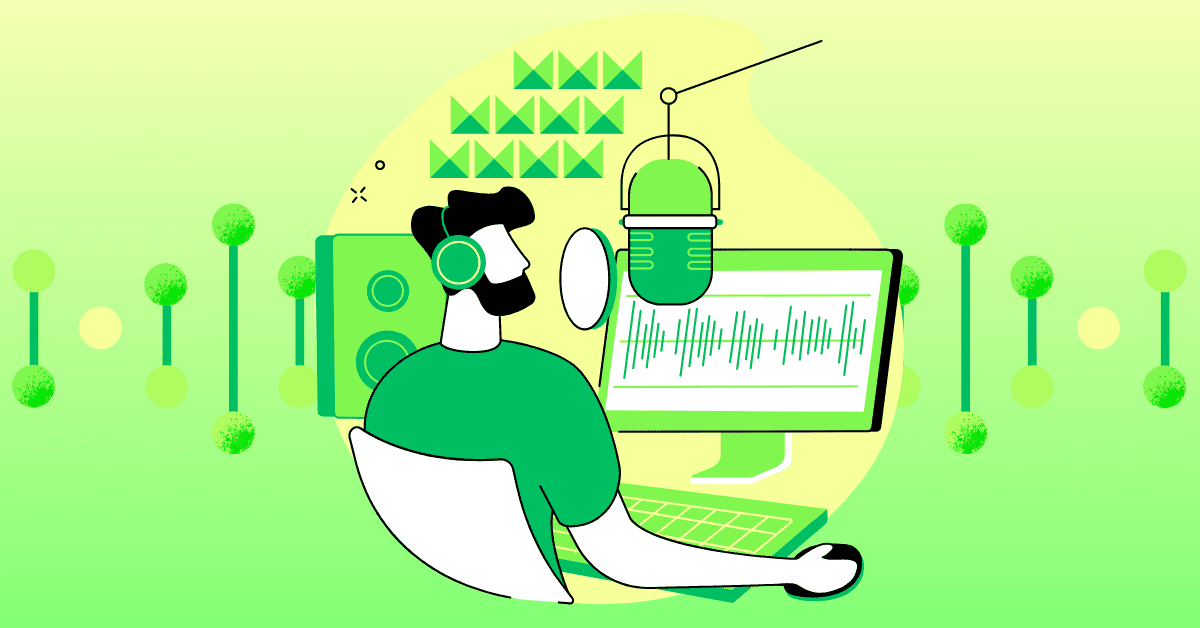Artificial intelligence (AI) voice cloning is just one of the many AI tools that have risen to prominence this year. Along with AI language models and AI image generation, AI voice replicators have become incredibly popular for businesses and individuals alike. They offer the promise of streamlined content creation while maintaining human engagement. They also cost a fraction of the price of hiring professional voice actors.
The applications of the technology are almost endless. Countless content creators have celebrity voices using AI to create viral social media posts. AI voice clones are now narrating complete audiobooks. Not to mention dubbing videos, creating voice-overs, voicing chatbots, and creating personalized voice assistants. With all the possibilities, it’s a good idea to understand exactly what this developing technology is and how it works.
What Is AI Voice Cloning?
AI voice cloning is a process that uses AI and machine learning algorithms to create a digital clone of a human voice. Once you have gone through the process, your voice cloner can put out a realistic rendition of the original voice, saying anything you tell it to.
Traditional text-to-speech systems use synthetic voices that are entirely computer-generated to sound close to a human voice. The difference with voice cloning is that you will hear what the original person’s voice would sound like in real life. This process is continually being developed but can already produce very accurate results.
How AI Voice Cloning Works in 5 Steps
While the technology behind AI voice cloning is very complex, the process for the end user is not. Here, we break down the five steps in creating an AI voice clone.
Data Set Collection for Authentic Speech
The first step is to build a data set of voice recordings of the original voice you want to clone. Creating a large and robust data set from a diverse range of audio clips recorded by the target voice is essential for the system to have enough data to analyze.
Make sure to record yourself in a quiet place so there isn’t any background noise. Speaking quickly, speaking slowly, and even singing gives the voice cloning technology a deeper understanding of the target voice’s nuances. Using different intonations and emotions while training the system will also lead to better output from the generative voice.
Prompts are usually given in text form for the target voice to read to build the data set. These prompts will be different passages to guarantee a complete inclusion of various words and sounds. The goal at this stage is to build up a full representation of the original human voice. When the system has organized the data, it matches the sounds against the words, allowing this process to be reversed later to create new audio files from the AI custom voice.
Data Processing and Organization
Once you have collected a large enough data set of real recordings, the voice cloning app will start to process this data. The data is broken down into individual soundwaves so the AI can understand it. The AI then labels these sound waves with their corresponding phoneme, the smallest unit of a sound in language. The system can then identify different patterns of speech.
Speech Model Training to Generate Human-Like Speech
Once the data is processed, it is ready to train the speech model. The speech model is a machine-learning algorithm designed to understand human voices and generate human-like speech as an AI custom voice.
The processing time of the training varies depending on the size of the data set that has been input. A larger data set will improve the accuracy of the custom voice, but it will also increase the processing time. It can sometimes take hours for the speech model training to be complete, so be patient.
Text-to-Speech Conversion for Transforming Text into Synthetic Voice
Once the algorithm trains the system on the original data set, it can produce an AI voice based on text input that sounds exactly like the original voice. This is the reverse of the first step when the target voice is reading texts.
Any language has an almost uncountable variety of sound combinations. When you add in intonation and emotion, it gets even more complex. This is why creating a varied data set at the start is so important so the model can reproduce any sound that the text later demands.
While the output voice is technically synthetic, it should sound much more human than traditional text-reading voices as it has been trained from a real human voice rather than created entirely from scratch.
Data Post-Processing for Quality and Naturalness of Generated Speech
This is the final stage of the voice-cloning service. The post-processing removes any errors or artifacts that may have been introduced during the conversion process. It ensures that you have a high-quality, clean, clear audio file to use anywhere. It is also the stage in which you can add your creative process by manually adjusting the speed, volume, and pitch of the audio file.
You can normally check the audio quality before downloading the file. Once you are happy with the final product, you can download the file in your desired format.
Choose the Best Solution for AI Voice Generation and Voice Cloning
When looking for the best solution in AI voice generation, choose a company that 700,000+ professionals already trust. You can now create a voice clone of your own voice and start using it in just minutes. Simply upload an audio file of your voice, or speak directly into our voice cloning technology, called Genny.
It is easy to get started with a free 14-day trial. Even basic and free users can create up to five custom voices and then categorize them into gender, accent, and style. Getting started on building your very own voice library has never been easier.


